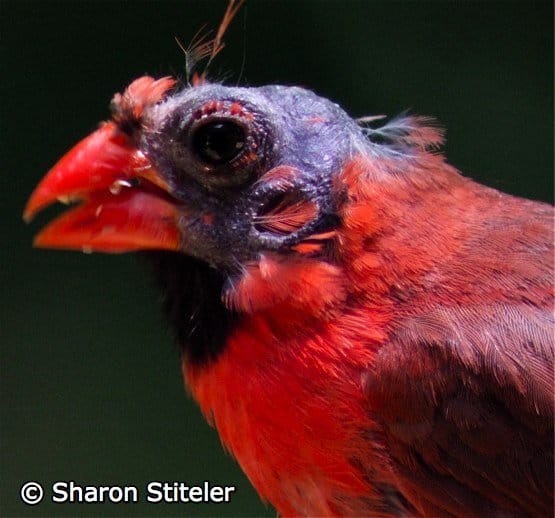Cardinal Like Bird With Black Head Blue Body
It is that special time of year when I'm out and about and someone comes up a bit sheepish and says, "You know, you're going to think I'm crazy but I saw this bird that was red like a cardinal but had a tiny little black head. It reminded me of a vulture…was that really a Northern Cardinal?"
I'm also sent photos via email and asked the same question on Twitter and Facebook.

Yep. Some Northern Cardinals lose the feathers on their heads this time of year. That is a freaky looking bird, especially when you notice that the bird's ear is below its eyeball.
I've read 2 different theories about bald cardinals but I think we need some graduate student to study this further. Theory 1: the birds have feather mites and normally can remove them when preening (grooming feathers with their beak). However, the beak will miss the head and the lice chew those feathers away. Theory 2: for some individual birds, this is the way they molt. Some birds, (particularly crested birds) lose all the feather on their heads. The new feathers grow back before the winter sets in and they are able to survive just fine. That's has to be really uncomfortable to have your whole head bursting with pin feathers growing in at the same time–like the worst case of acne you could imagine.
Though cardinals are most often seen afflicted with this, Blue Jays will frequently show up to feeders with a bald head. My mom once had a bald Common Grackle show up to here feeders, about the same time as a bald cardinal. At that point I figured the bald bird issue was feather mites…but then why weren't her other birds like chickadees, titmice and finches showing up bald?
I've volunteered with a couple of organizations that had education birds used for public programs. At one of them, an Eastern Screech-Owl would drop all of his head feathers during his molt. At another organization, the education Great Horned Owl dropped its head, neck and body feathers, leaving only the facial disc feathers and wing feathers in place during the molt. In both cases I was not allowed to post photos of the birds on the Internet (one must respect a bird's medical privacy). No one knew why the screech-owl dropped its feathers, it was tested for mites and didn't have them. The great horned also did not have mites and it was deteremined to be an endocrine issue causing the bird to lose her feathers all at once like that.
So it is somewhat a of a mystery. You can learn more about bald birds here, but the bottom line is to not freak out. They will grow back, they may have trouble attracting a mate, but their feathers will return.
Source: https://www.10000birds.com/yes-that-bald-bird-is-a-bald-cardinal-probably.htm
0 Response to "Cardinal Like Bird With Black Head Blue Body"
Post a Comment